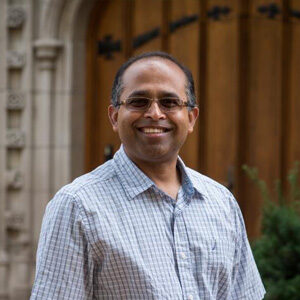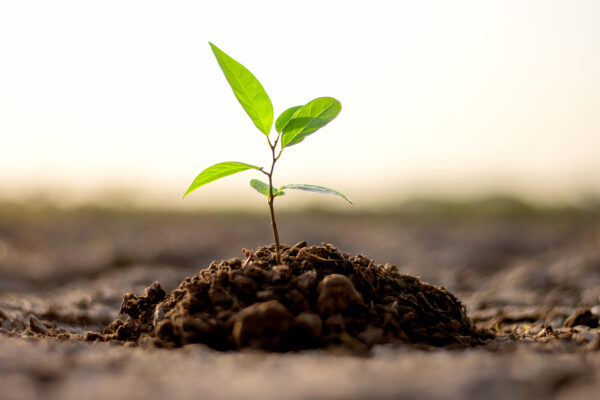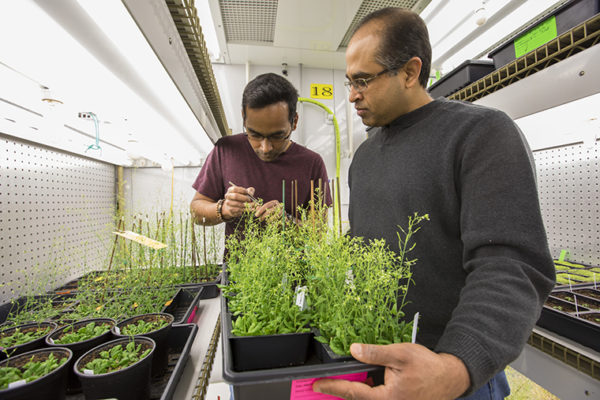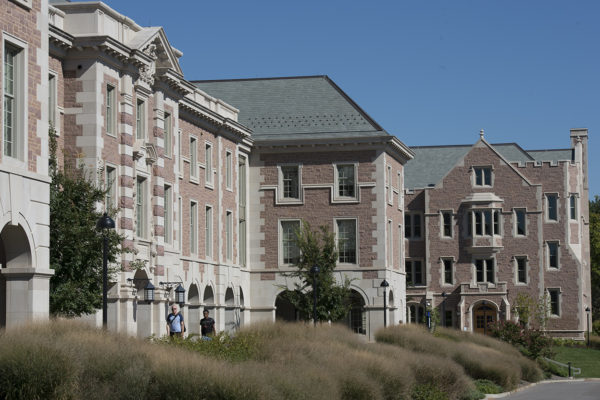Ram Dixit, professor and chair of biology in Arts & Sciences at WashU, conducts research motivated by the spectacular diversity of cell shapes in nature, which underlies the viability and adaptability of organisms.
The long-term goal of Dixit’s work is to understand the molecular machinery for plant cell wall construction. He teaches courses in cell biology, imaging, and microscopy.
The Dixit lab seeks to understand the mechanisms underlying plant cell morphogenesis. The work focuses on the cortical microtubule cytoskeleton, which defines plant cell shape by serving as a scaffold for cell wall assembly. Scientists in the Dixit lab address research questions in the model plant Arabidopsis thaliana using a combination of molecular genetics, high-resolution live-cell imaging and computer simulation studies. In addition, they are developing new techniques for reconstituting the dynamics and interactions of cortical microtubules in vitro to analyze the functions of key molecules under controlled conditions and at the single molecule level.
Dixit serves as an investigator for the National Science Foundation-funded collaborative Center for Engineering MechanoBiology and is the chair of the biology department at Washington University.
Ryan Calcutt and Ram Dixit in Arts & Sciences and their collaborators created the first artificial scaffolds that can support the growth of individual plant cells — a discovery that will make it possible to study how forces such as gravity affect the way that plant cells form and grow.
The Dixit lab at Washington University in St. Louis, which in a study published in 2018 found molecular brakemen that keep the Arabidopsis Fragile Fiber 1 (FRA1) motor protein in check, uncovered in continuing research that FRA1 cinches its track in place through cellulose synthase-microtubule uncoupling proteins.
The National Science Foundation (NSF) has added a newly formed collaboration between Washington University in St. Louis and the University of Pennsylvania to its list of Science and Technology Centers (STC). The new center, one of just 12 nationally, will be supported by a $23.6 million NSF grant to study the mechanics of plant and animal cells. This deeper dive into how single cells function could transform both medicine and plant science.
Ram V. Dixit, PhD, assistant professor of biology in Arts & Sciences at Washington University in St. Louis, received a five-year, $1,163,940 Faculty Early Career Development (CAREER) award from the National Science Foundation to study mechanisms underlying plant cell morphogenesis.
Ram Dixit’s lab at Washington University in St. Louis has shown that a protein named after the katana, or samurai sword, plays a crucial role in patterning the “skeleton” inside plant cells. The work provides a clue to the long-standing mystery of how the cytoskeletons within both plant and animal cells become organized in function-specific patterns.




